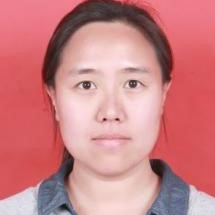Advanced Treatment and Sustainable Utilization of Sewage Water
A special issue of Sustainability (ISSN 2071-1050). This special issue belongs to the section "Sustainable Water Management".
Deadline for manuscript submissions: closed (15 October 2022) | Viewed by 10200
Special Issue Editors
Interests: advanced treatment and bioremediation of groundwater; new theories and technologies for biological denitrification; water treatment microbiology
Special Issues, Collections and Topics in MDPI journals
Interests: energy saving and emission reduction; material metabolism analysis; industrial wastewater treatment
Interests: biological nitrogen and phosphorus removal; biodegradation and remediation of toxic and refractory organic pollutants
Special Issues, Collections and Topics in MDPI journals
Special Issue Information
Dear Colleagues,
Rapid industrialization and population explosion have exacerbated the shortage of global water resources. Sewage water has gained additional scientific and political attention and is viewed as an essential water resource with more exploitability and reusability for sustainable development. To generate good quality water for recycling and reuse, advanced wastewater treatment is essential to resolve stubborn contaminants (i.e., exogenous residue nutrients, refractory metabolic products, transport and removal of micropollutants, and emerging pollutants). Accordingly, there has been a growing interest in innovative advanced wastewater treatment technologies for efficient water purification. Moreover, other potential resources (i.e., organics, nutrients, and thermal heat) along with water recycling are also meaningful to realize the utilization of sewage water.
The aim of the research topic “Advanced Treatment and Sustainable Utilization of Sewage Water” is to provide a suitable platform to publish the latest novel research on the current trends, developments, and applications of technologies to improve existing methods and develop new processes to enhance advanced treatment and reuse of wastewater, raise the standard of effluent for wastewater treatment plants (WWTPs), and to realize low-carbon operation and resource recovery in WWTPs. Therefore, this Special Issue calls for contributions to the topics related to the advanced treatment and sustainable utilization of sewage water, which includes new advancements and applications for the efficient remediation of contaminants, improvement and modification of the existing processes, new technologies for recovering resources, sludge treatment and disposal, and dealing with emerging contaminants in the effluent of WWTPs.
Topics of interest include, but are not limited to, the following:
- Wastewater treatment for sustainable development and environmental safety;
- Bacteria/fungal/algae-based biological approaches for sustainable degradation of contaminants;
- Sustainable plant–bacterial remediation for wastewater pollutants;
- Emerging bioremediation approaches for sustainable degradation of contaminants;
- Microbial electrochemical technologies for sustainable degradation of contaminants;
- Hybrid bioreactor treatment systems for pollutants removal;
- Physicochemical coupled biological processes for sustainable remediation of wastewater pollutants;
- Hybrid approaches coupling bioremediation with advanced oxidation processes;
- Membrane microbial fuel cell technologies for complex recycling;
- New frontiers in view of a circular economy in wastewater treatment and recycling;
- Molecular aspects of novel integrated bioremediation approaches to identify novel degrading genes, metabolites, metabolic pathways, and plant–microbe mechanisms in wastewater treatment.
We hope that the Special Issue will provide a scientific platform for communicating and exploring state-of-the-art applications in this area.
Prof. Dr. Junfeng Su
Dr. Qian Zhang
Dr. Sicheng Shao
Guest Editors
Manuscript Submission Information
Manuscripts should be submitted online at www.mdpi.com by registering and logging in to this website. Once you are registered, click here to go to the submission form. Manuscripts can be submitted until the deadline. All submissions that pass pre-check are peer-reviewed. Accepted papers will be published continuously in the journal (as soon as accepted) and will be listed together on the special issue website. Research articles, review articles as well as short communications are invited. For planned papers, a title and short abstract (about 100 words) can be sent to the Editorial Office for announcement on this website.
Submitted manuscripts should not have been published previously, nor be under consideration for publication elsewhere (except conference proceedings papers). All manuscripts are thoroughly refereed through a single-blind peer-review process. A guide for authors and other relevant information for submission of manuscripts is available on the Instructions for Authors page. Sustainability is an international peer-reviewed open access semimonthly journal published by MDPI.
Please visit the Instructions for Authors page before submitting a manuscript. The Article Processing Charge (APC) for publication in this open access journal is 2400 CHF (Swiss Francs). Submitted papers should be well formatted and use good English. Authors may use MDPI's English editing service prior to publication or during author revisions.
Keywords
- wastewater treatment
- sustainable development
- sustainable bioremediation
- phytoremediation
- bioelectrochemistry
- microbial fuel cell
- advanced oxidation processes
- emerging contaminants
Benefits of Publishing in a Special Issue
- Ease of navigation: Grouping papers by topic helps scholars navigate broad scope journals more efficiently.
- Greater discoverability: Special Issues support the reach and impact of scientific research. Articles in Special Issues are more discoverable and cited more frequently.
- Expansion of research network: Special Issues facilitate connections among authors, fostering scientific collaborations.
- External promotion: Articles in Special Issues are often promoted through the journal's social media, increasing their visibility.
- e-Book format: Special Issues with more than 10 articles can be published as dedicated e-books, ensuring wide and rapid dissemination.
Further information on MDPI's Special Issue polices can be found here.







